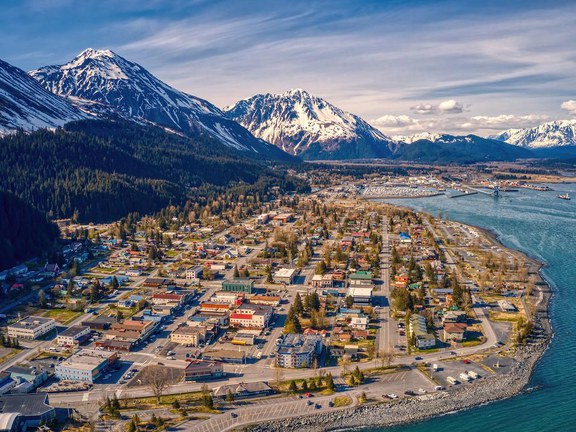Modeling pandemic impacts on Alaskan salmon season helps communities prepare for different scenarios
Problem
What can communities do to prepare for demands on medical resources and assess the costs and benefits of mitigation policies in the midst of a pandemic?
A small fishing region such as Bristol Bay, Alaska, will typically increase its local population by about three times during the summer fishing season. The town could face potentially huge losses—about $1.5 billion—if the season was canceled due to pandemic mitigation policies.
Findings
As an extension of an existing project in the area, scientists conducted surveys with fishery participants and local residents to better understand the costs and benefits of various mitigation policies. They also evaluated the demand for medical resources and assessed risk perceptions, responses, and preferences to develop pandemic-preparedness scenarios.
Impact
This research will help inform residents and local policymakers about the 2020 season and prepare for the 2021 season and another possible wave of COVID-19. Socioecological modeling can estimate the probability of a COVID-19 introduction and the rate of spread under various parameters, including delayed season openings or partial closures of the commercial fishery.
- The models also provide projections on how quickly a rea resources could be overwhelmed by an uncontrolled outbreak, as well as under various scenarios of social distancing, both within the fishing fleet while on shore and for the community at large.
Related Research Area: Community Resilience and Capacity
Research Credit
Team
- Guangqing Chi, Davin Holen, Lance Howe, Kevin Berry, Hannah Henninghausen, Todd Radenbaugh, Gabe Dunham, Luke Smith, Ann Tickamyer, Heather Randell
Participating Departments
Partners
- City of Dillingham, Alaska
- University of Alaska, Fairbanks
- University of Alaska, Anchorage
Competitive Funding
- National Science Foundation (Office of Polar Programs)
Federal and State Appropriations
- USDA NIFA Hatch Multistate Project PEN04623, Accession #1013257
Emerging Discoveries
Emerging Discovery
Office for Research and Graduate Education
Address
217 Agricultural Administration BuildingUniversity Park, PA 16802-2600
- Email agresearch@psu.edu
- Office 814-865-3136
Emerging Discovery
Office for Research and Graduate Education
Address
217 Agricultural Administration BuildingUniversity Park, PA 16802-2600
- Email agresearch@psu.edu
- Office 814-865-3136






